Much of the Andrews Forest watershed has experienced more recent fire over the last 150 years, ranging in severity from ground low-severity understory fire that killed few adult trees to so-called stand-replacing fires that killed most or all of the old-growth trees that established approximately 500 years ago.
Fast Facts
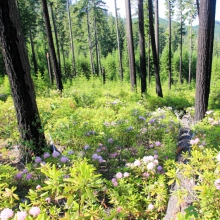
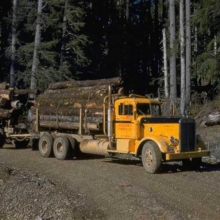
The first timber harvest at the Andrews Forest occurred in 1951. Scientists initiated three sets of experimental watersheds designed to study the effects of logging on hydrology, sediment yield, and nutrient losses. Treatments included clearcutting and partial cutting, and one watershed was left in its “natural” forested condition as a control. Learn more about the history of the Forest on our History page.
The fifty three species of mammals recorded at the Andrews Forest include black bear, flying squirrel, deer, and red tree voles. To learn more about what animals live at the forest, see our Species List page.

Most of the Andrews Forest is covered in dense forest. Huge, iconic Pacific Northwest old-growth conifer forests grow here with cedar, hemlock, and moss-draped ancient Douglas fir trees. See our Forest Description page for more information.

The lowest temperature recorded at the Andrews Forest was -11 Fahrenheit (-24 degrees celsius), taken at the VANMET meterological station. Climate measurements, including temperature, rainfall, and windspeed, have been recorded at the Andrews Forest for decades, allowing scientists to watch for trends and make comparisions over time. Learn more about our climate research on our Research Programs page or find out more about locations and instruments on our Climate Stations page.

Lookout Creek’s average discharge is the equivalent of a fully-loaded concrete truck rumbling down the river bed every 2.2 seconds!
Lookout Ck mean annual discharge - 121.83 cubic feet per second (cfs)
A standard concrete truck holds 10 cubic yards or 270 cubic feet (cf).
270 cf ÷ 121.83 cfs = 2.21 s
Concrete trucks appear to be 7.168 m long (google) and if you chained them, bumper to bumper with no space in between, the “train of concrete trucks” would be traveling 7.25 mph.
With a more reasonable following distance of a couple of truck lengths, you’d have a never ending line of concrete trucks moving around 25 miles an hour!
(photo from Fortrans Inc)

Elevation ranges from 1,350 to 5,340 feet (410 to 1630 m) above sea level. See the Forest Description for more information.

The largest snowpack recorded at the Andrews Forest was 4.4 meters (or 14 feet), at the Upper Lookout Meterological Station in 2008. The water storage in the snowpack on this date was equal to a depth of 1.56 meters (or 5 feet) of liquid water. Learn more about our climate measurements on our Research Programs page.

The nine species of fish found at the Andrews Forest live in the small, cold streams that flow through the forest. The species include the cutthroat trout, the mottled sculpin, and the speckled dace. To learn more about the kinds of fish and other creatures at the Andrews Forest, see our Species Lists page.
The highest temperature recorded at the Andrews Forest is 106 Fahrenheit (41 degrees celsius), taken at a fan-aspirated shield at the PRIMET meterological stations. Climate measures, including temperature, rainfall, and windspeed, have been recorded at the Andrews Forest for decades, allowing scientists to watch for trends and make comparisions over time. Learn more about our climate research on our Research Programs page or find out more about locations and instruments on our Climate Stations page.
The amount of rain that falls at the Andrews Forest over a whole year is 7 feet (2.1 meters). That's 6 inches (15 centimeters) more than the height of LeBron James the basketball player!
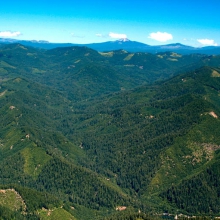
The Andrews Forest is situated in the western Cascade Range of Oregon, and covers the entire 15,800-acre (6400-ha) drainage basin of Lookout Creek.
Twenty different species of reptiles (which include lizards) and amphibians (which include salamanders) can be found at the Andrews Forest. The rough-skinned newt (Taricha granulosa) is so commonplace at the Forest that it has taken on the role of mascot, appearing in the Andrews Forest logo. The Pacific Giant Salamander (Dicamptodon ensatus), fondly nicknamed Dicamp by researchers, can reach up to 12 inches (30 cm) long. The Dicamp is subject of an ongoing study, 30 years running, that tracks the size and locations of salamanders and fish in a section of Mack Creek at the Andrews Forest. Learn more on our Research Programs page and on our Species Lists page.
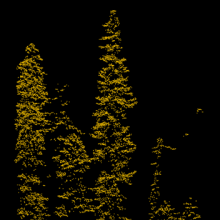
The tallest tree on the Andrews Forest, a Douglas Fir, was identified by LIDAR imaging. If you saw the previous version of this Fast Fact, you would have seen that the tallest tree on site was 299 feet, measured in 2008. The height of that tree was verified in 2009 with a measuring tape! This other, now taller tree, was measured by LIDAR in 2016. A cross-section of that LIDAR image is pictured here. As a point of comparison, the Statue of Liberty stands at 305 feet tall, including her base.
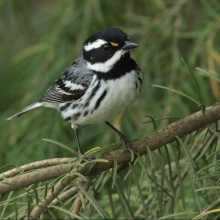
The Andrews Forest is home to resident birds, such as the Varied Thrush and the the iconic Northern Spotted Owl, which stay all year round. The Forest is also home to migratory birds, such as the Black-Throated Grey Warbler and the Swainson's Thrush, which spend the summer breeding season at the Andrews Forest and fly south for the summer. The full list of birds can be found on our Species List.

Plant species at the Andrews Forest include enormous Douglas fir trees, which can reach 300 feet tall, and the tiniest mosses. The 505 species recorded include plants with flowers, cones, catkins, and fruits. The full list of plants species can be found on our Species Lists page.
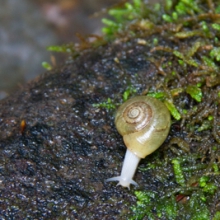
Invertebrates, which include insects, spiders, centipedes, and slugs, number more than 3,100 at the Andrews Forest, with the possibility of many more species to be found and documented. See our species lists for a full list of the invertebrate species that have been documented...so far.
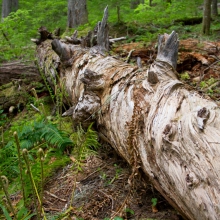
Scientists estimate that it will take 1,000 years before a western red cedar log in the long-term decomposition experiment will have completely decomposed. Compare that to the estimate of how long a pacific silver fir log will take -- only 57 years! The difference in decomposition time between the two different species of trees is due to the structure of the wood, the chemistry of the wood, and the kinds of microbes that decompose the wood over time. Decomposition time of wood influences carbon storage and soil. Learn more through our publications and through our research programs page.
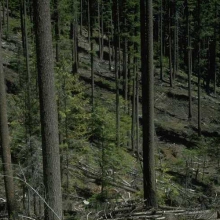
The first timber harvest at the Andrews Forest occurred in 1951 to study the effects of logging on hydrology, sediment yield, and nutrient losses. Later harvests were done to test different harvesting techniques. Learn more about the history of the Forest on our History page.
